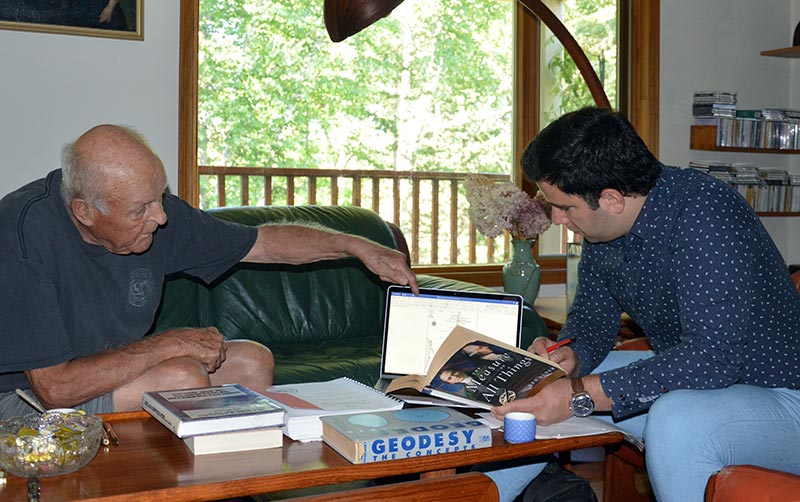UNB research reveals that you're shorter than you think
Author: UNB Newsroom
Posted on Jul 23, 2020
Category: UNB Fredericton

The metre is used as a means to measure our height, calculate distance and understand our world. However, what if the length of the metre that we rely on today was calculated incorrectly in 18th century France, and we have been misrepresenting the actual length ever since? Research out of UNB’s Geodesy Research Lab in Fredericton proves that is the case.
More than 200 years ago, the French Academy of Science was tasked with developing a new system of measurement, known today as the metric system. The first step was to define a unit of length: the metre. Today, the value of the metre is deeply engrained in everyday life and the scientific community, making it hard to imagine that the length of the metre is actually shorter than we know it to be.
The task of defining the metre was entrusted to two geodesists: Pierre Francois Andre Mechain and Jean-Baptiste Delambre. Their goal was to remeasure the size of Earth to better define the new unit of length. It was crucial that the unit of length be linked to Earth on the grounds that the planet was one of the only things that was known to be both unchanging and universally accessible. In 1791, Earth’s size and shape was relatively well known, and a metre was defined as one-10 millionth of the distance from the pole to the equator.
Mechain and Delambre measured part of the Parisian meridian from Dunkirk to Barcelona as accurately as possible. By combining the meridian measures with the measurement of latitudes at the start and end points, the size of Earth could be determined. After a seven-year survey campaign, the scientists completed the task and the metre was given a formal length based on their calculations.
Today, the size of Earth is much better known and understood than it was in the 18th century. Research by UNB’s Geodesy Research Lab – a world leader in the theory of height systems – confirmed that the length of the metre determined by Mechain and Delambre from measuring Earth’s quadrant is off by almost two kilometers when compared with modern calculations using satellite observations. This means that the metre as we know it is shorter than it should be. This begs the question of how two world-renowned geodesists could produce such an error.
“Professor emeritus Dr. Petr Vaniček and I initiated this research while we were having coffee at his home two or three years ago,” says Dr. Ismael Foroughi, a postdoctoral fellow at UNB. “Together with other UNB Geodesy group members, including Dr. Marcelo Santos, Dr. Robert Kingdon, and Dr. Michael Sheng we were able to discover the 220-year-old mystery and have published our research results."
In short, Mechain and Delambre made no error. In 1791, the science of Earth’s gravity field was in its infancy; therefore, the French geodesists did not account for the effects of gravity in their calculations. By working with the satellite gravitational database for the past several years, UNB’s Geodesy Research Lab used the data to correct the astronomic measurements by accounting for the effects of gravity.
The error caused by unknowingly ignoring gravity in their determination was calculated to be about 1,949 metres, which proves that the astronomers’ observations were actually quite accurate.
The metre, as it has been defined, is about 0.2 millimetres shorter than it actually is. History shows that changing a system of measurement is an extremely complex problem.
Media contact: Kelsey Pye
Photo: Dr. Petr Vaniček, professor emeritus in geodesy and geomatics engineering at UNB, and Dr. Ismael Foroughi discussing their metre research. Credit: UNB.
